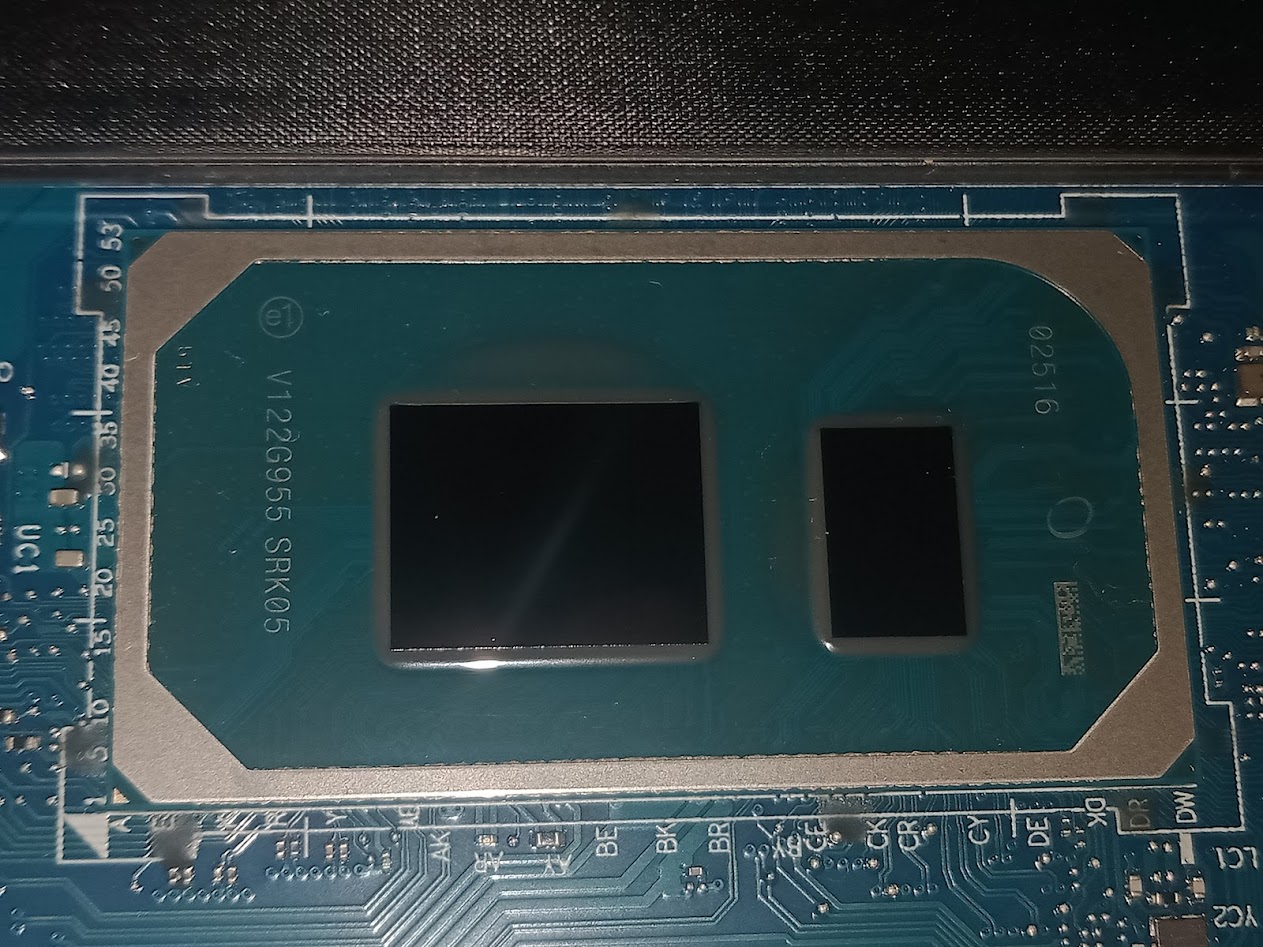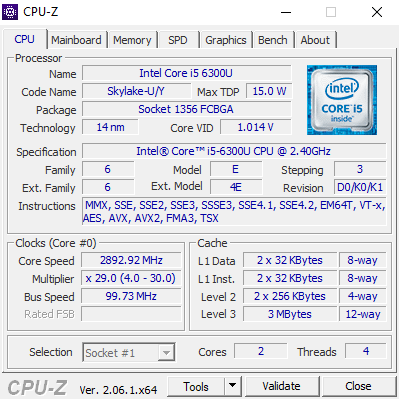Comparing: Intel Core i5 1135G7 vs Intel Core i5 6300U
In this comparison, we analyze two Processors: Intel Core i5 1135G7 and Intel Core i5 6300U, using synthetic benchmark tests to evaluate their overall performance. This side-by-side comparison helps users understand which hardware delivers better value, speed, and efficiency based on standardized testing. Whether you're building a new system or upgrading an existing one, this benchmark-driven evaluation offers valuable insights to guide your decision.
Specification Comparison Table
This specification comparison presents technical details of several devices or components to help you understand the key differences between each option. Use this table as a reference to determine which device best suits your needs.
| Specification | Intel Core i5 1135G7 | Intel Core i5 6300U |
|---|---|---|
| Architecture | x86 | x86 |
| Technology | 10 nm | 14 nm |
| Clock | 2.4 GHz - 4.2 GHz | 2.4 GHz - 3 GHz |
| Core/Thread | 4 / 8 | 2 / 4 |
| Segmen | Mobile | Mobile |
Submission Comparison Table
This submission comparison table displays the number and details of benchmark data submissions from various devices or components. This information helps you understand the performance based on the benchmarks that have been tested, as well as providing an overview of the consistency and popularity of the available benchmark results.
| No. | Benchmark Software | Intel Core i5 1135G7 | Intel Core i5 6300U |
|---|---|---|---|
| 1 | 3DMark CPU PROFILE 1 THREAD |
846 marks |
466 marks |
| 2 | 3DMark CPU PROFILE MAX |
3441 marks |
924 marks |
| 3 | 7-Zip |
30697 MIPS |
10900 MIPS |
| 4 | Cinebench - 2003 |
4548 cb |
1601 cb |
| 5 | Cinebench - R11.5 |
10.37 pts |
2.91 pts |
| 6 | Cinebench - R15 |
936 cb |
262 cb |
| 7 | Cinebench - R20 |
2195 pts |
656 pts |
| 8 | Cinebench - R23 Multi Core with BenchMate |
5661 pts |
1477 pts |
| 9 | Cinebench - R23 Single Core with BenchMate |
1334 pts |
777 pts |
| 10 | CPU-Z Benchmark - Multi Thread |
2462.5 marks |
817.6 points |
| 11 | CPU-Z Benchmark - Single Thread |
504 marks |
289.8 points |
| 12 | Geekbench3 - Multi Core |
17993 points |
5290 points |
| 13 | Geekbench3 - Single Core |
4933 points |
2561 points |
| 14 | Geekbench4 - Multi Core |
19133 points |
6112 points |
| 15 | Geekbench4 - Single Core |
6098 points |
3309 points |
| 16 | Geekbench5 - Multi Core |
4699 points |
1397 points |
| 17 | Geekbench5 - Single Core |
1403 points |
711 points |
| 18 | Geekbench6 - Multi Core |
5275 points |
1593 points |
| 19 | Geekbench6 - Single Core |
1784 points |
911 points |
| 20 | GPUPI for CPU - 100M |
26sec, 772ms |
1min, 544ms |
| 21 | GPUPI for CPU - 1B |
5min, 49sec, 840ms |
22min, 28sec, 335ms |
| 22 | GPUPI for CPU v.3.3 - 100M |
15sec, 271ms |
1min, 2sec, 869ms |
| 23 | GPUPI for CPU v.3.3 - 1B |
4min, 6sec, 707ms |
21min, 42sec, 40ms |
| 24 | HWBOT x265 - 1080P |
29.688 FPS |
9.555 FPS |
| 25 | HWBOT x265 - 4K |
6.696 FPS |
2.148 FPS |
| 26 | PCMark 7 |
8651 marks |
5020 marks |
| 27 | PCMark10 |
4692 marks |
2677 marks |
| 28 | PiFast |
15sec, 570ms |
23sec, 10ms |
| 29 | SuperPi - 1M |
8sec, 157ms |
12sec, 607ms |
| 30 | SuperPi - 32M |
7min, 8sec, 285ms |
10min, 50sec, 377ms |
| 31 | WinRAR - Multi Thread |
8781 KB/s |
3001 KB/s |
| 32 | WinRAR - Single Thread |
1800 KB/s |
1075 KB/s |
| 33 | wPrime - 32M |
6sec, 334ms |
15sec, 976ms |
| 34 | wPrime - 1024M |
3min, 18sec, 987ms |
8min, 37sec, 272ms |
| 35 | y-cruncher - Pi-25m |
1sec, 343ms |
3sec, 825ms |
| 36 | y-cruncher - Pi-1b |
1min, 24sec, 842ms |
5min, 20sec, 566ms |
Submission Comparison Chart
This chart visualizes the benchmark scores comparison between two hardware devices based on submitted data.
Media Gallery
A collection of photos of tested hardware. These images can help you identify the physical form, model, and variant of the hardware in question. These photos are from our own documentation, and if they are not available we may not be able to document them.
About Hardware Intel Core i5 1135G7
The Intel Core i5-1135G7 is a quad-core mobile processor introduced in late 2020 as part of Intel’s 11th generation Tiger Lake lineup. Designed for thin and light laptops, this CPU delivers a strong balance of performance, power efficiency, and modern features, making it a popular choice for both casual users and professionals. Featuring 4 cores and 8 threads through Hyper-Threading Technology, it operates at a base clock of 2.4 GHz and can reach up to 4.2 GHz with Intel Turbo Boost, ensuring smooth multitasking and snappy responsiveness for day-to-day applications.
Built using Intel’s advanced 10nm SuperFin process, the i5-1135G7 offers improved efficiency and thermal performance over previous 14nm generations. With a configurable TDP ranging from 12W to 28W, OEMs can adjust the performance envelope depending on the device’s thermal design. The standout feature of this processor is its integrated Intel Iris Xe Graphics, equipped with 80 Execution Units and a dynamic frequency of up to 1.3 GHz. Compared to older Intel UHD Graphics, Iris Xe brings a massive leap in performance, capable of handling casual gaming, 4K video playback, and GPU-accelerated workloads like video rendering or image editing.
In benchmark tests such as Cinebench R23, the i5-1135G7 scores around 5661 points (multi-core) and 1334 points (single-core), showcasing excellent performance for a low-power chip. These scores reflect its capability to handle modern productivity software, web-based workflows, and even creative tools like Adobe Photoshop or Premiere Pro though for heavier workloads, a higher-end CPU may still be recommended.
Real-world performance testing was done on a Lenovo IdeaPad Slim 3i 14ITL6, a budget-to-midrange laptop equipped with 12GB DDR4 3200MHz dual-channel memory (8+4 configuration). This setup, combined with Windows 10 and Windows 11 22H2, allows the i5-1135G7 to fully utilize its integrated GPU and high-speed memory interface for a snappy and responsive user experience.
Whether you're a student, a professional, or a casual user looking for a capable, energy-efficient processor, the Intel Core i5-1135G7 stands out as one of the best value choices in the ultrabook category.
Hardware Detail:
Device: Lenovo IdeaPad Slim 3i 14ITL6
RAM: 12GB DDR4 3200MHz Dual Channel (8+4)
OS: Windows 10, Windows 11 22H2
Friday, 06 August 2021 04:34:04 | Update: 1 month ago
About Hardware Intel Core i5 6300U
The Intel Core i5-6300U is a dual-core, quad-thread mobile processor that belongs to Intel’s Skylake generation, released in 2015. Designed with power efficiency in mind, the i5-6300U operates at a base clock speed of 2.4 GHz and can dynamically boost up to 3.0 GHz thanks to Intel’s Turbo Boost technology. Built on a 14nm manufacturing process, this processor has a low thermal design power (TDP) of just 15 watts, making it ideal for ultrabooks and slim laptops where battery life and heat management are crucial. The chip features integrated Intel HD Graphics 520, which supports smooth 4K video playback and can handle light gaming and everyday graphical tasks, making it suitable for casual multimedia users.
In practical use, the i5-6300U offers reliable performance for common activities such as web browsing, office productivity software, video streaming, and basic photo editing. It is commonly found in business laptops like the Lenovo ThinkPad T470, equipped with 8GB DDR4 RAM and running Windows 10, providing a smooth user experience for professionals and students alike. Despite its strengths, the i5-6300U’s performance in modern multi-threaded applications and gaming falls behind newer processors due to its limited cores and older architecture. Nevertheless, it remains a solid choice for users prioritizing energy efficiency and portability over raw computing power.
Overall, the Intel Core i5-6300U continues to be a dependable processor in the used laptop market and legacy systems, delivering a good balance of performance and power consumption for everyday computing tasks, especially in ultrabook designs where efficiency is key.
Hardware Detail:
Device: Lenovo ThinkPad T470
RAM: 8GB DDR4 Single Channel
OS: Windows 10
Thursday, 10 August 2023 10:15:48 | Update: 1 month ago





